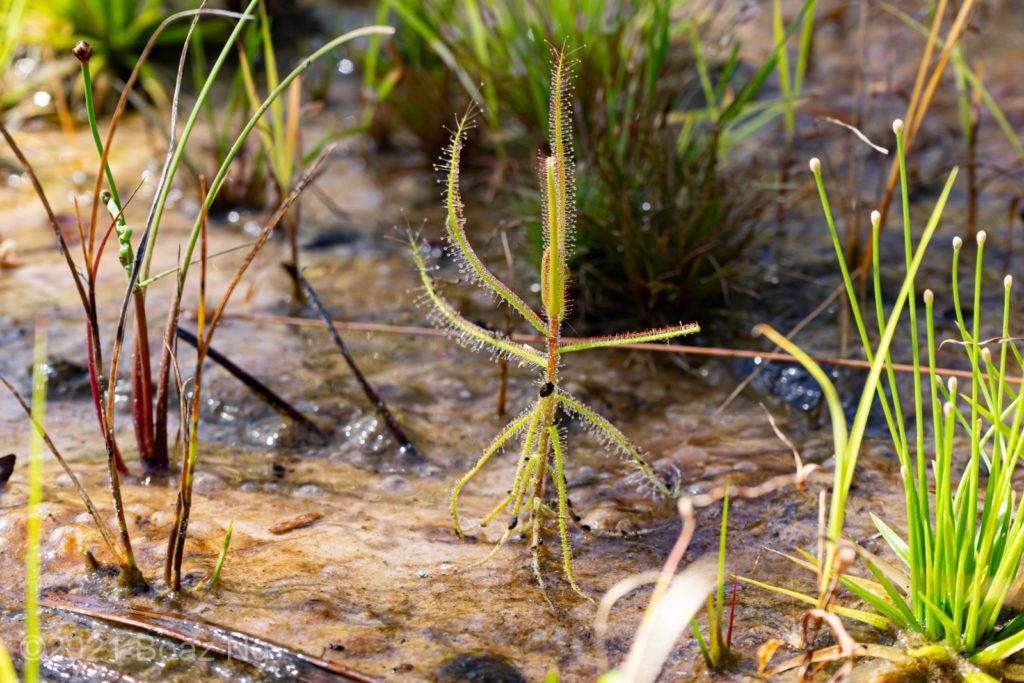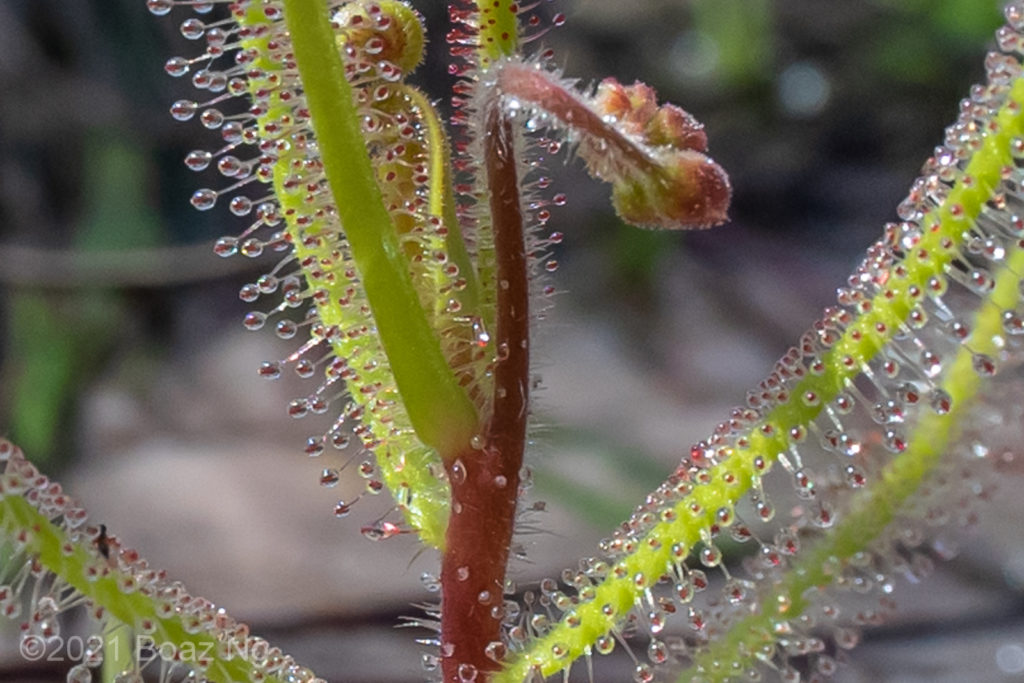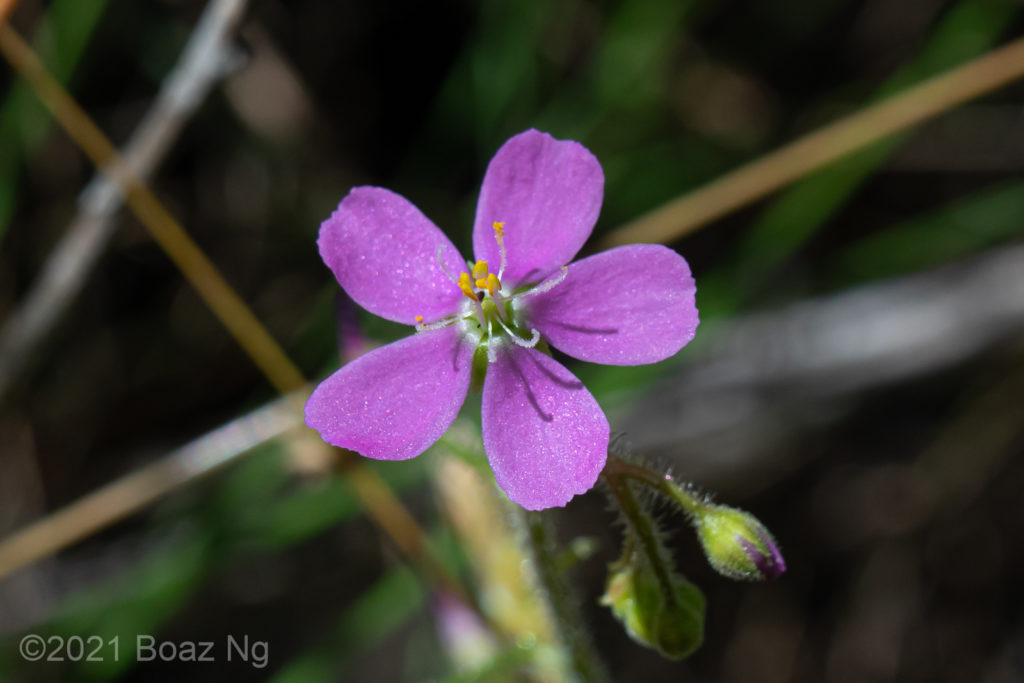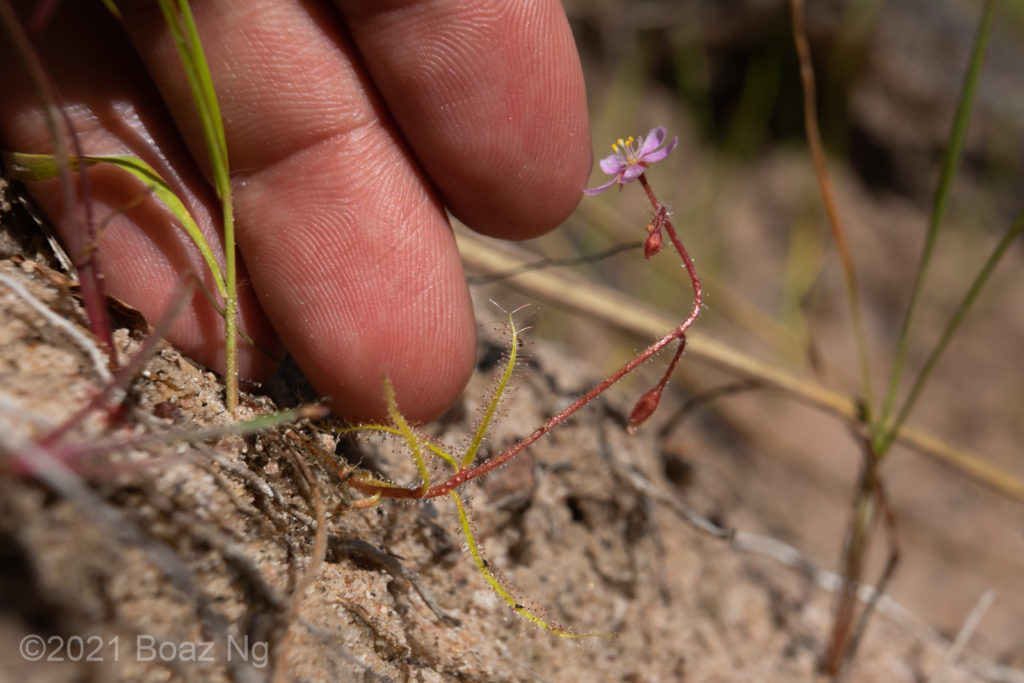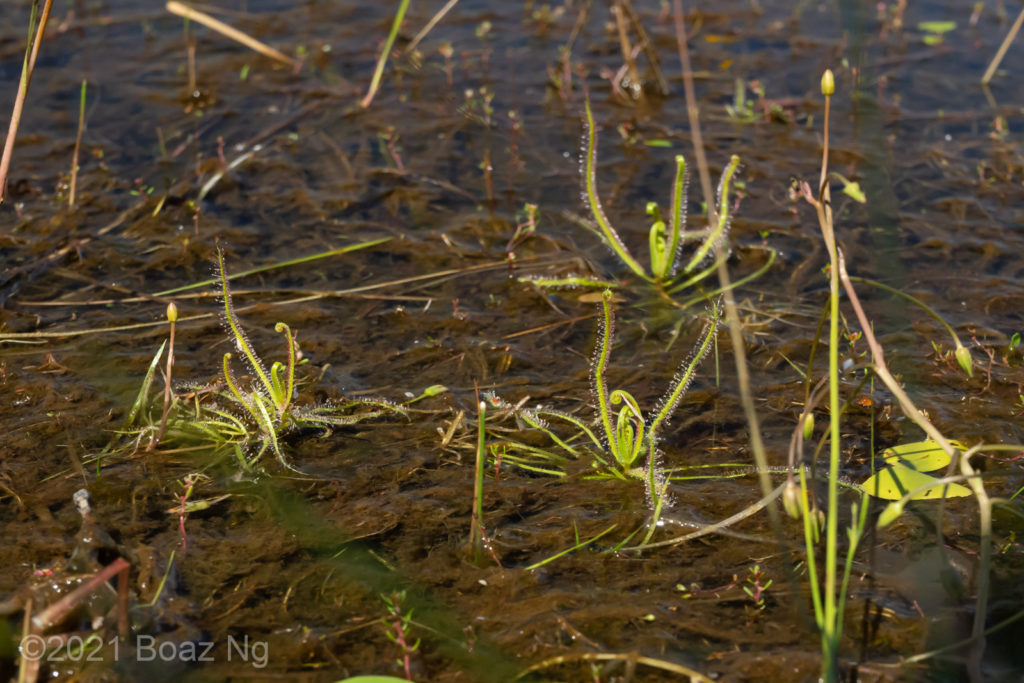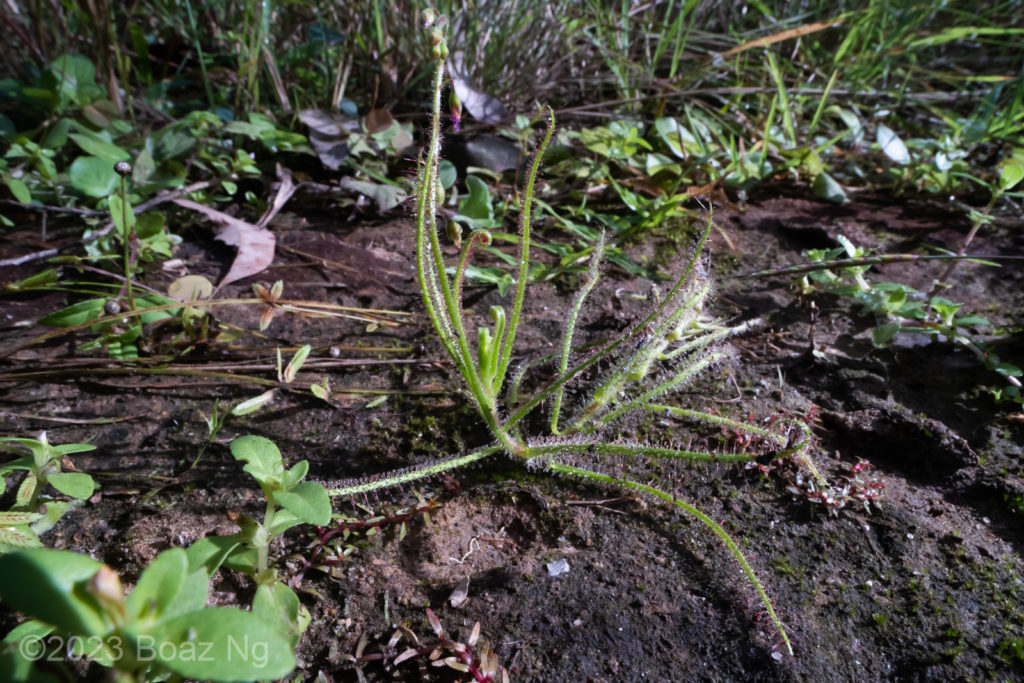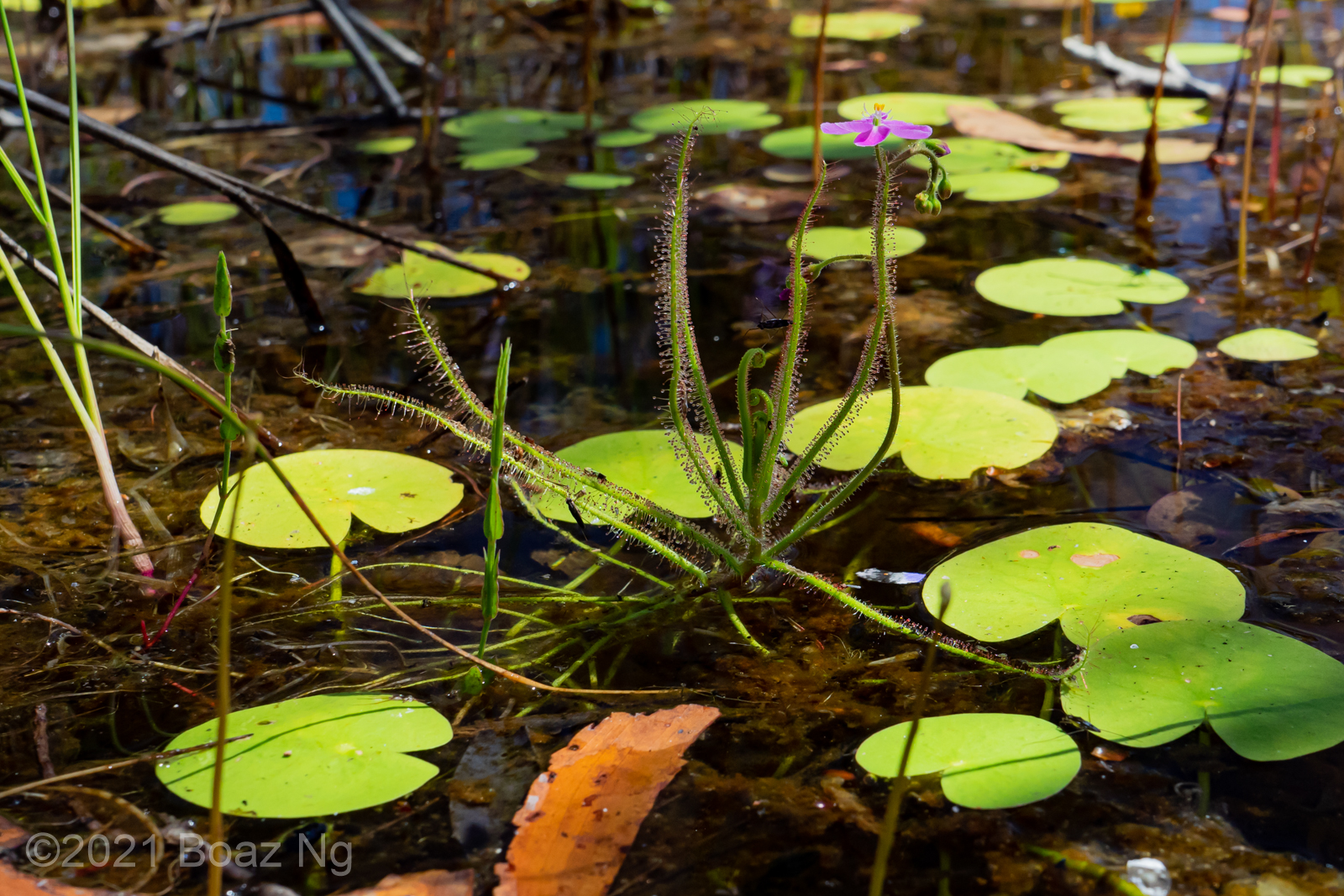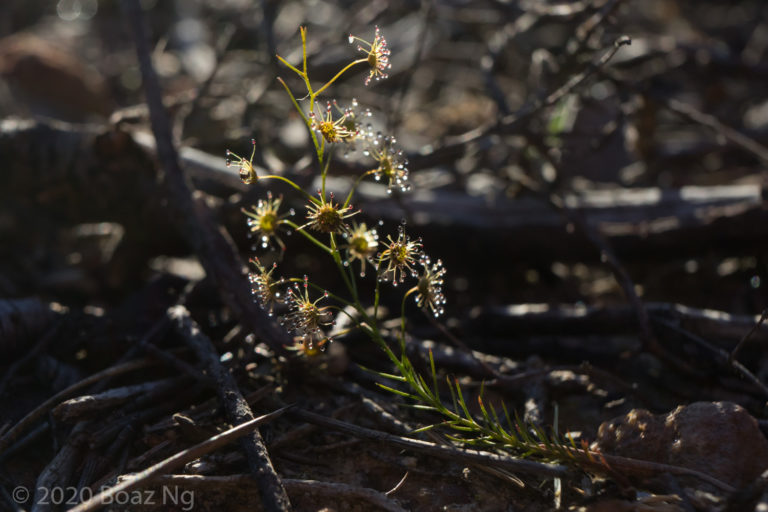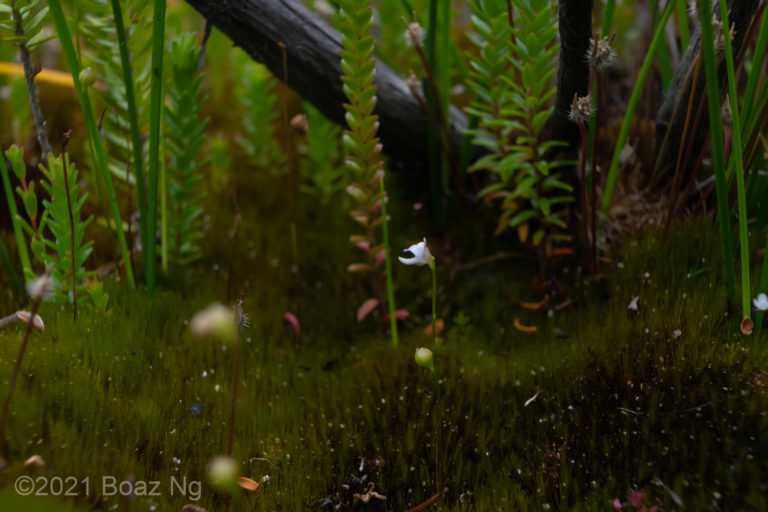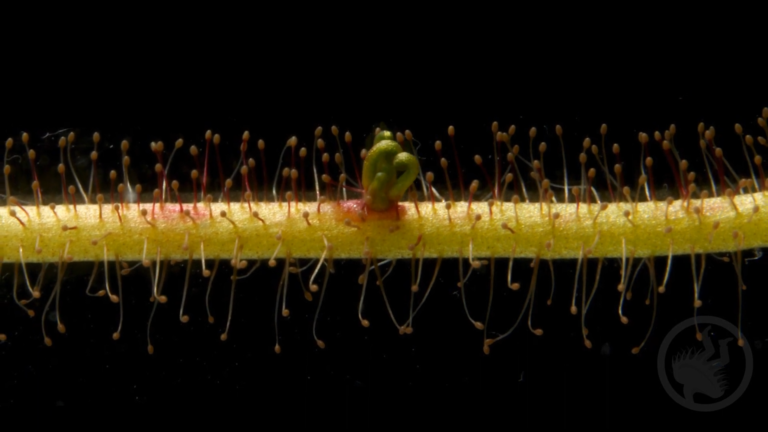Drosera aquatica is a sundew in the section Arachnopus endemic to Northern Australia. The species is notable for its aquatic lifestyle, being adapted to the wettest niches.
D. aquatica can be recognised by the lack of a petiole, with the glandular laminae extending all the way to the main stem. The undersides of the leaves are glabrous. The main stem typically grows around 30cm in length and are often tinged red, with the leaves are green. The entire plant is covered with a mix of long, wispy non-glandular hairs, and mucilage-secreting glandular hairs. The flowers are pink, with outwards extending stigmas. The pedicels droop downwards after pollination.
As its name suggests, the species grows in seasonally flooded wetlands, sandplains and swamps, often in waterlogged substrates. In certain locations, the plants even grow on top of the water and has been known to complete its life cycle without ever touching the ground. The stem of the plant is buoyant, and the old leaves sprawl on top of submerged plants and gunk to keep the growing point upright. The species is distributed across the top end around Darwin and the Kakadu, in the Kimberleys in WA and on Cape York, Queensland.
D. aquatica can be distinguished from its relatives by the lack of a petiole, and wispy indumenta that cover the entire plant (except the undersides of the leaves). In drier conditions, the plants can fail to grow to a large size and will bloom at a diminutive size. These plants closely resemble D. nana but can be distinguished by examining the flower (pink in D. aquatica, white in D. nana) and shape of pedicels in fruit (drooping downwards in D. aquatica, upright in D. nana).
